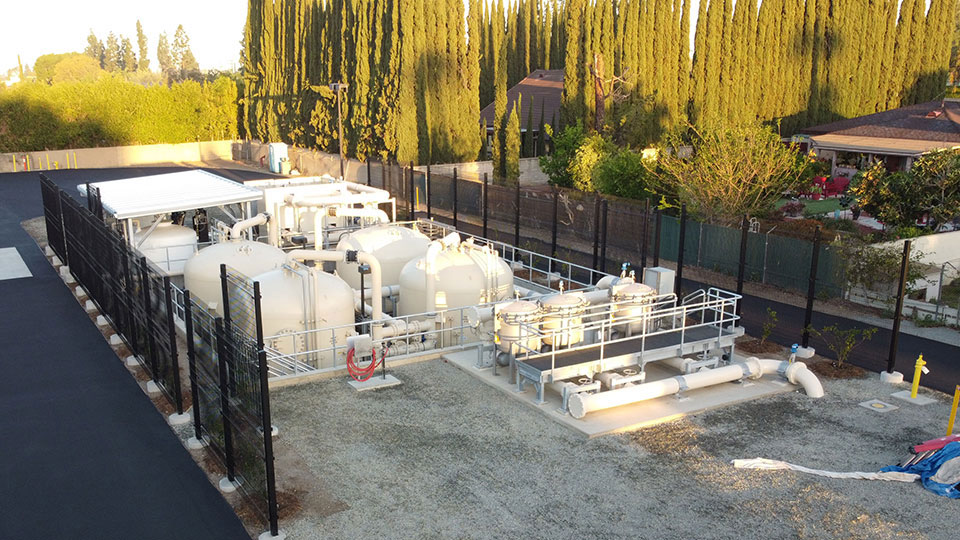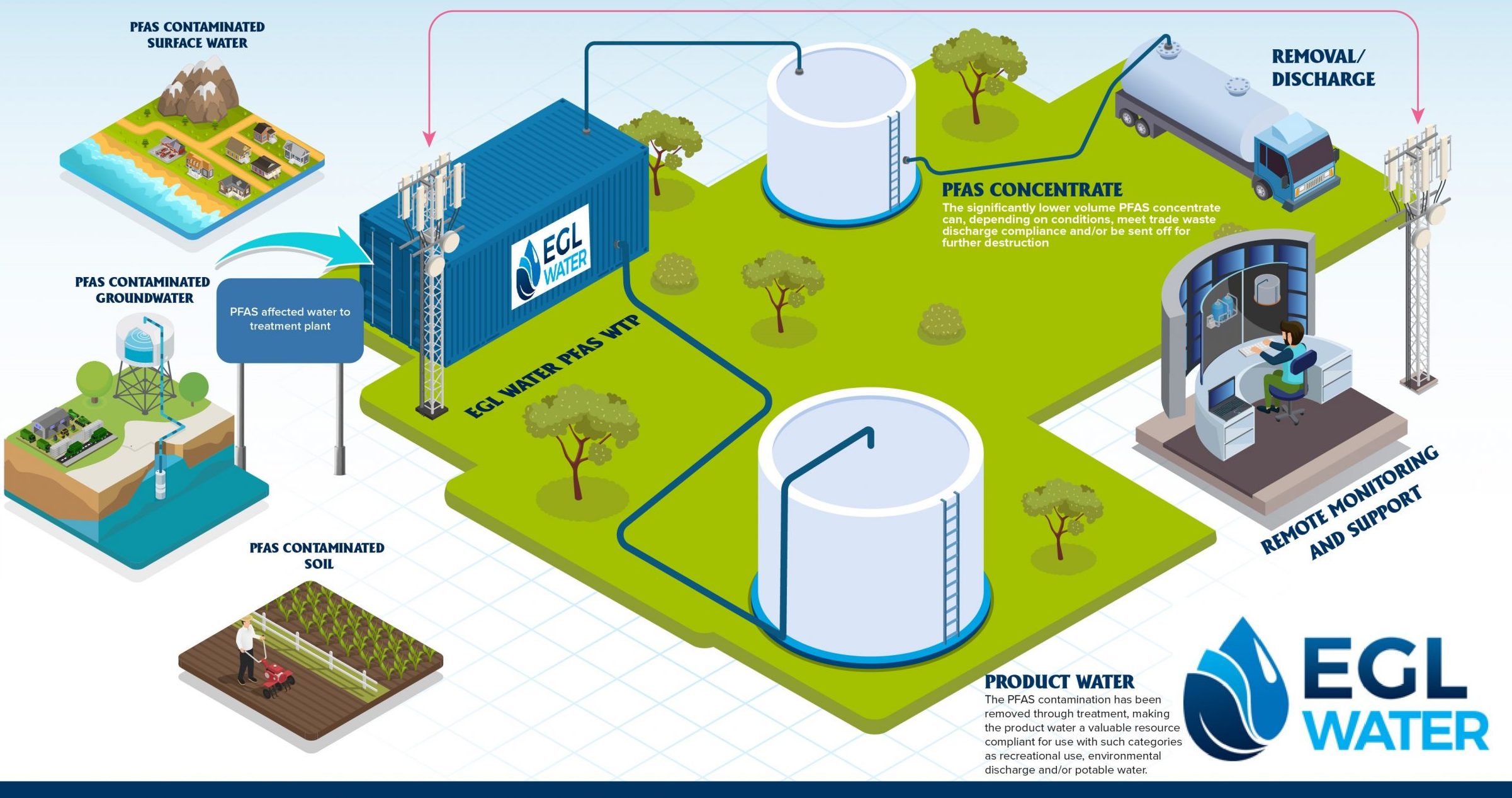Just How PFAS Treatment Ensures Tidy and Sustainable Water
The presence of PFAS, typically recognized as "permanently chemicals," poses considerable obstacles to water top quality and public health. The ramifications of these therapies prolong beyond instant health and wellness advantages; they elevate essential inquiries concerning lasting water administration methods that need to be dealt with to guarantee a durable future.

Comprehending PFAS Contamination
PFAS, or per- and polyfluoroalkyl materials, have arised as a considerable ecological concern because of their prevalent frequency and persistence in the environment. These synthetic chemicals have been used in numerous commercial applications and customer items, consisting of non-stick pots and pans, water-proof garments, and food product packaging, as a result of their unique buildings such as water and oil resistance.
The contamination of dirt and water resources by PFAS takes place largely via commercial discharges, firefighting foam use, and seeping from landfills. pfas management. When released, these substances are resistant to degradation, leading to their accumulation in the environment. This persistence raises crucial problems, as PFAS can travel fars away with groundwater and surface area water supply, impacting drinking water supplies and communities

Health And Wellness Dangers of PFAS
The persistence of PFAS in the atmosphere raises considerable health and wellness concerns for people subjected to these substances. Research study has connected PFAS exposure to numerous negative health results, including immune system disorder, liver damage, and enhanced risk of particular cancers.
The universality of PFAS in consumer items, such as non-stick kitchenware, water-repellent fabrics, and food product packaging, further amplifies the danger of exposure. Consuming alcohol water polluted with PFAS is a significant worry, as these chemicals can seep right into groundwater sources. At risk populations, consisting of children and those living near commercial websites, may encounter increased threats due to their creating systems and prospective for higher exposure degrees.
As recognition of these health dangers remains to grow, regulative firms are beginning to develop standards for PFAS levels in drinking water. Public wellness efforts are important to minimize exposure and safeguard areas from the lasting effects of these dangerous materials.

Innovative Therapy Technologies
Exactly how can we successfully tackle the obstacles positioned by resource PFAS contamination in water resources? Ingenious treatment innovations are becoming critical services in the mission for clean water. These techniques concentrate on the elimination or destruction of per- and polyfluoroalkyl substances (PFAS), which are infamous for their determination in the setting.
One promising approach is adsorption utilizing innovative materials, such as activated carbon and ion exchange resins. These materials have revealed efficacy in capturing PFAS molecules from water. One more significant innovation is membrane layer filtration, which uses nanofiltration and turn around osmosis to different contaminants at the molecular level, therefore giving a barrier against PFAS.
Furthermore, advanced oxidation procedures (AOPs) use strong oxidants to break down PFAS compounds right into safe results. This method is particularly efficient for dealing with very infected water resources. Bioremediation techniques, utilizing details microorganisms, are likewise being checked out to weaken PFAS.
As study continues, hybrid systems that combine several modern technologies might offer improved performance, attending to the intricacies of PFAS contamination. The growth and application of these innovative treatment technologies are vital actions towards making sure the safety and security and sustainability of our water sources.
Advantages of Efficient PFAS Therapy
Efficiently treating PFAS contamination in water resources considerably improves public health and ecological safety and security. PFAS, commonly described as "forever chemicals," are immune to deterioration and can build up in the body, causing major wellness threats such as cancer, liver damage, and immune system disorder. By applying efficient treatment approaches, communities can lower direct exposure to these harmful materials, ultimately enhancing the wellness outcomes of their populations.
Moreover, successful PFAS treatment adds to the conservation of neighborhood communities. Contaminated water can detrimentally impact aquatic life and interrupt the fragile balance of regional environments. By ensuring clean water, treatment procedures protect biodiversity and preserve environmental stability.
In addition, efficient PFAS removal can foster public self-confidence in water top quality. When communities are guaranteed like it that their drinking water is devoid of dangerous contaminants, it promotes a sense of safety and security and well-being. This trust fund is vital for area involvement and support for ongoing water administration campaigns.
Future of Water Sustainability
Amid growing issues concerning water top quality and scarcity, the future of water sustainability hinges on ingenious techniques and joint initiatives. As communities deal with the looming dangers of impurities like PFAS, the growth of advanced treatment technologies is vital. These learn the facts here now innovations not only focus on the elimination of unsafe substances but also promote the reuse and recycling of water, thereby decreasing overall demand.
Furthermore, efficient water governance plays a vital duty in making certain lasting techniques. Policymakers have to incorporate scientific research study with regulatory frameworks to develop clear standards for water use and treatment. Stakeholder engagement, including neighborhood areas and markets, promotes a sense of shared obligation and encourages sustainable techniques throughout different industries.
Investment in framework is additionally important; upgrading aging systems to incorporate modern-day purification and purification methods can significantly boost water top quality. Furthermore, embracing eco-friendly technologies, such as all-natural filtration systems, can give eco-friendly remedies.
Inevitably, the future of water sustainability hinges on an all natural method that combines innovation, policy, and neighborhood participation. By prioritizing these components, we can protect our water sources for generations to come, making certain clean and lasting water for all.
Verdict
In verdict, the efficient treatment of PFAS is necessary for making sure clean and sustainable water. Eventually, durable PFAS treatment approaches add to long-lasting resilience in water management, fostering public count on in water top quality and promoting lasting techniques.